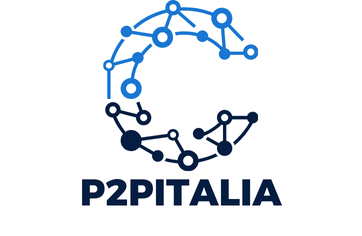Introduction to AI-Powered Fraud Detection
In today’s rapidly evolving digital landscape, accurate fraud detection is a crucial concern across various industries. From banking to e-commerce, the ability to swiftly identify and prevent fraudulent activities can save billions. The traditional methods of fraud prevention often fall short due to the sheer volume and complexity of transactions. Enter AI fraud detection, a game-changer in enhancing the precision and speed of fraud prevention techniques.
Advancements in Fraud Detection Technologies
AI has transformed the landscape of fraud prevention by integrating advanced techniques like machine learning and natural language processing into detection systems. These technologies can analyse vast data sets to identify patterns and anomalies indicative of fraudulent behaviour. This wasn’t always the case, though. Fraud detection technologies have significantly evolved from simple rule-based systems to intelligent algorithms that learn and adapt over time.
Have you seen this : Boosting Real-Time Analytics in Smart Manufacturing: The Transformative Power of Edge Computing
With AI, businesses can now employ robust fraud detection solutions that offer real-time monitoring and alerts, drastically reducing the time it takes to catch fraud. Overall, the integration of AI into fraud prevention techniques not only improves accuracy but also enhances efficiency, offering a promising path for industries seeking to stay ahead of fraudulent threats.
Understanding the Challenges in Fraud Detection
The fraud detection challenges in today’s digital landscape are vast and evolving. Traditional systems often grapple with outdated methodologies, which struggle to keep pace with ever-adaptive threats. A significant issue lies in the data quality and availability, which are crucial for accurate fraud identification. Without reliable data inputs, even the most advanced algorithms can lead to false positives or negatives, thereby failing to identify suspicious activities.
Also to see : Enhancing Precision: Top Strategies for Optimizing AI-Powered Financial Forecasting Models
Cybersecurity issues also play a critical role in the effectiveness of fraud detection. As cybercriminals develop new techniques, such as leveraging sophisticated software to mask their actions, traditional systems may become less effective. Moreover, the integration of emerging technologies, like AI and machine learning, promises improved detection capabilities. However, these technologies also require high-quality data to function optimally.
The impact of evolving fraud techniques cannot be understated. As fraudsters continuously adapt, they force detection models to be equally dynamic. This leads to a perpetual race between those creating fraudulent schemes and those developing the solutions to thwart them. Addressing these challenges in fraud detection necessitates constant evolution of strategies, advanced threat intelligence, and an emphasis on maintaining robust cybersecurity protocols.
Methodologies for Enhancing Accuracy
In the field of fraud detection methodologies, leveraging advanced data analysis techniques is paramount. These methodologies can significantly improve the detection rate of fraudulent activities.
Machine Learning Algorithms
Fraud detection heavily relies on machine learning algorithms to predict suspicious activities effectively. Popular models include decision trees, neural networks, and random forests. Each of these models has its unique approach to categorising data, predicting fraud based on patterns. The use of adaptive learning further enhances these models. Adaptive learning dynamics can continuously adjust to evolving fraudulent tactics, offering a robust solution for dynamic fraud scenarios. Model validation becomes crucial here, as it ensures the accuracy and reliability of the predictive models. Performance metrics, such as precision and recall, are essential indicators for assessing these models.
Data Enrichment Techniques
To counteract evolving fraud, incorporating data enrichment techniques can add layers of accuracy to the models. By integrating external data sources, algorithms receive broader perspectives, allowing more precise predictions. Data preprocessing is vital to optimise this process by cleaning and transforming raw data into a usable format. Merging diverse data sets amplifies the robustness of analysis, ensuring a comprehensive approach to fraud detection.
Anomaly Detection Approaches
Statistical methods form the basis of anomaly detection approaches. These methods highlight outliers or deviations that may indicate fraudulent activity. The synergy of AI with traditional analytics further refines these techniques, improving detection results. Case studies have shown that integrated systems bolster the successful identification of anomalies, proving the effectiveness of these combined approaches.
Innovative Technologies in Fraud Detection
In recent years, Innovative Technologies have significantly transformed the field of fraud detection. Technologies like blockchain and biometrics play pivotal roles in enhancing security measures. Blockchain provides a transparent and tamper-proof ledger, making it difficult for fraudulent activities to go unnoticed, thereby instilling trust in the transactional processes. Similarly, biometrics offer advanced user authentication methods, such as fingerprint and facial recognition, which are hard for fraudsters to replicate.
The integration of Artificial Intelligence (AI) has further streamlined fraud detection processes. AI algorithms can analyse vast volumes of data quickly and identify patterns that might signify fraudulent activities. This automation not only reduces the need for manual intervention but also ensures a rapid response to threats, enhancing the efficiency of fraud detection systems.
In addition, the use of cloud technology in fraud detection tools offers scalable solutions that adapt to varying needs. Cloud platforms provide the necessary computational power and storage required for big data analysis, thus supporting the dynamic nature of fraud detection. By leveraging these technologies, organisations can stay ahead in the battle against fraudulent activities, protecting both their interests and those of their customers.
Real-World Examples and Case Studies
Examining real-world applications offers insightful lessons and sets a clear pathway for future innovations. Let’s dive into some intriguing case studies across different sectors.
Financial Sector Applications
In the bustling world of finance, fraud prevention has become a cornerstone of operational integrity. Both banks and insurance companies have harnessed technology to combat fraud effectively. Notable implementations have demonstrated significant improvements; a major bank reported a 30% increase in fraud detection rates after deploying AI-driven solutions. These systems analyse transaction patterns, flagging anomalies swiftly and accurately.
Lessons learned from these implementations emphasize the importance of data quality and continuous system training to adapt to evolving fraudulent tactics. For example, many institutions realized the need for robust data pipelines ensuring accurate, real-time information feed into their fraud detection algorithms. This adaptive learning is crucial in staying a step ahead of fraudsters.
Retail and E-commerce Insights
The e-commerce landscape provides further compelling case studies of fraud detection. Leading platforms leverage AI to decipher consumer behaviour, identifying suspicious activities promptly. A case study revealed that after integrating AI, a leading retailer observed a 40% decrease in fraud-related losses, underscoring the profound impact of technology. Consumer behaviour analytics play a crucial role here, as AI tools can differentiate between genuine and fraudulent transactions effectively.
These examples illustrate the transformative potential of AI, and highlight critical lessons for other sectors to adopt.
Practical Tips for Implementation
When it comes to implementing AI solutions for fraud detection, organizations must strategically consider both infrastructure and workforce preparedness. The cornerstone of successful adoption lies in understanding the key considerations crucial for navigating this transformation.
The first step involves assessing the existing technology stack to ensure it supports AI-driven systems. Compatibility and scalability should be prioritized to accommodate evolving AI models and datasets. Security is paramount; safeguarding sensitive financial data against breaches protects both the organization and its customers.
A data-driven culture within teams is vital. Encouraging team members to engage in continuous learning helps in adapting to new technologies seamlessly. Regular workshops and training sessions can keep everyone up to date with the latest developments, fostering an environment where data literacy thrives.
Continuous training and updates to AI models remain crucial. As fraudulent techniques become more sophisticated, regular updates ensure AI systems remain one step ahead. This requires collaboration between tech experts and domain specialists to refine and enhance model accuracy.
In practice, seamless implementation could involve:
- Ongoing collaboration between departments, ensuring diverse input and perspectives
- Leveraging external consultants for expertise when necessary
- An iterative approach, allowing room for model improvements based on feedback.











